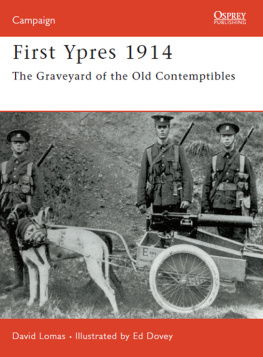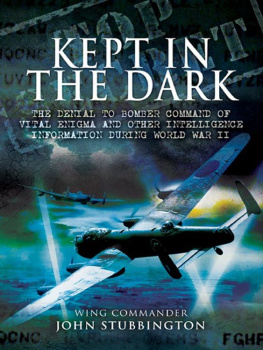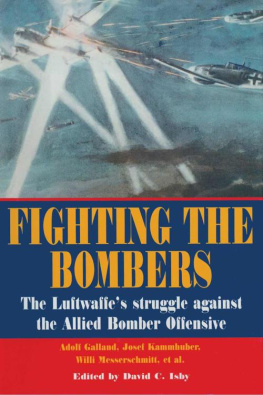
SELLING SCHWEINFURT
TITLES IN THE SERIES
Airpower Reborn: The Strategic Concepts of John Warden and John Boyd
The Bridge to Airpower: Logistics Support for Royal Flying Corps Operations on the Western Front, 191418
Airpower Applied: U.S., NATO, and Israeli Combat Experience
The Origins of American Strategic Bombing Theory
Beyond the Beach: The Allied Air War against France
The Man Who Took the Rap: Sir Robert Brooke-Popham and the Fall of Singapore
Flight Risk: The Coalitions Air Advisory Mission in Afghanistan, 20052015
Winning Armageddon: Curtis LeMay and Strategic Air Command, 19481957
Rear Admiral Herbert V. Wiley: A Career in Airships and Battleships
From Kites to Cold War: The Evolution of Manned Airborne Reconnaissance
Airpower over Gallipoli, 19151916
The History of Military Aviation

PAUL J. SPRINGER, EDITOR
This series is designed to explore previously ignored facets of the history of airpower. It includes a wide variety of disciplinary approaches, scholarly perspectives, and argumentative styles. Its fundamental goal is to analyze the past, present, and potential future utility of airpower and to enhance our understanding of the changing roles played by aerial assets in the formulation and execution of national military strategies. It encompasses the incredibly diverse roles played by airpower, which include but are not limited to efforts to achieve air superiority; strategic attack; intelligence, surveillance, and reconnaissance missions; airlift operations; close-air support; and more. Of course, airpower does not exist in a vacuum. There are myriad terrestrial support operations required to make airpower functional, and examinations of these missions is also a goal of this series.
In less than a century, airpower developed from flights measured in minutes to the ability to circumnavigate the globe without landing. Airpower has become the military tool of choice for rapid responses to enemy activity, the primary deterrent to aggression by peer competitors, and a key enabler to military missions on the land and sea. This series provides an opportunity to examine many of the key issues associated with its usage in the past and present, and to influence its development for the future.
SELLING SCHWEINFURT
TARGETING, ASSESSMENT,
AND MARKETING
IN THE AIR CAMPAIGN
AGAINST GERMAN INDUSTRY
BRIAN D. VLAUN
NAVAL INSTITUTE PRESS
Annapolis, Maryland
Naval Institute Press
291 Wood Road
Annapolis, MD 21402
2020 by Brian D. Vlaun
All rights reserved. No part of this book may be reproduced or utilized in any form or by any means, electronic or mechanical, including photocopying and recording, or by any information storage and retrieval system, without permission in writing from the publisher.
Library of Congress Cataloging-in-Publication Data
Names: Vlaun, Brian D., author.
Title: Selling Schweinfurt : targeting, assessment, and marketing in the air campaign against German industry / Brian D. Vlaun.
Other titles: Targeting, assessment, and marketing in the air campaign against German industry
Description: Annapolis, Maryland : Naval Institute Press, [2020] | Series: History of military aviation | Includes bibliographical references and index.
Identifiers: LCCN 2020016789 (print) | LCCN 2020016790 (ebook) | ISBN 9781682475362 (hardback) | ISBN 9781682474679 (ebook) | ISBN 9781682474679 (epub)
Subjects: LCSH: Operation Pointblank, 19431944. I World War, 19391945Aerial operations, American. I United States. Army Air Forces. Air Force, 8th. I United States. Army Air ForcesHistoryWorld War, 19391945. I Great Britain. Royal Air ForceHistoryWorld War, 19391945. I World War, 19391945Military intelligence. I Bombing, AerialGermanyHistory20th century.
Classification: LCC D790 .V56 2020 (print) I LCC D790 (ebook) I DDC 940.54/49730943dc23
LC record available at https://lccn.loc.gov/2020016789
LC ebook record available at https://lccn.loc.gov/2020016790
 This paper meets the requirements of ANSI/NISO z39.48-1992 (Permanence of Paper). Printed in the United States of America.
This paper meets the requirements of ANSI/NISO z39.48-1992 (Permanence of Paper). Printed in the United States of America.
28 27 26 25 24 23 22 21 209 8 7 6 5 4 3 2 1
First printing

CONTENTS
ILLUSTRATIONS
ACKNOWLEDGMENTS
I wish to extend my sincere gratitude to Dr. Stephen Chiabotti, professor emeritus and former director of Air Universitys PhD program at the School of Advanced Air and Space Studies, without whom this book would not have been possible. Also, I wish to thank Dr. Mark Conversino and Dr. Paul Gelpi for their thoughtful feedback and encouragement.
For assistance with this projects core research, I owe my wholehearted thanks to Ms. Tammy Horton and Ms. Maranda Gilmore of the Air Force Historical Research Agency at Maxwell Air Force Base and to Ms. Terry Kiss and Ms. Yvonne Kincaid of the Air Force Historical Support Office at Joint Base Anacostia-Bolling.
As with all works of history, especially those that examine human or organizational behavior, this study is unavoidably influenced by the authors perspectives and inclinations. Although I have made a conscious effort to guard against such biases, any remaining errors of fact, omission, or interpretation are entirely my own. Finally, the conclusions and opinions expressed in this book do not reflect the official position of the U.S. Government, the Department of Defense, or the United States Air Force.
INTRODUCTION
The formulation of bombing policy is a fairly complex subject. It demands the combination of a massive flow of intelligence, with a feeling for changing bombing capabilities, and the changing sequence of war strategy and timing, in its broadest sense. The fact that this intellectual process related directly to violent acts of war gave to it, at the time, extraordinary point and vitality.
WALT ROSTOW, ENEMY OBJECTIVES UNIT
What we all want is results. I am certain that neither you nor anybody else in Washington wants it better than we in the field, and I am certain also that nobody is trying harder to accomplish a high level of bombing accuracy than we are. Let us continue, therefore, to report our bombing as we see it here.
MAJ. GEN. IRA EAKER TO MAJ. GEN. BARNEY GILES, 15 SEPTEMBER 1943
B y the time of the German surrender on V-E Day, 8 May 1945, Allied air forces had dropped a combined total of almost 2.7 million tons of bombs on Germany, 83 percent of which fell after 1 January 1944.
Big Week occurred barely a month into Lt. Gen. Carl A. Spaatzs command of all U.S. bombers in Europe. Along with Lt. Gen. Ira Eakers seasoned staff from Eighth Air Force, Spaatz inherited immense pressure from Washington. Despite his two most vexing factorswinter weather and targeting diversionshe knew he needed to show he was adhering to General Arnolds target preferences as best he could. He needed to improve both the tempo and results of the air campaign as it reached its final stages. Both the cross-Channel invasion and the future of the Army Air Forces potentially depended on airpowers demonstrated success.
Next page









 This paper meets the requirements of ANSI/NISO z39.48-1992 (Permanence of Paper). Printed in the United States of America.
This paper meets the requirements of ANSI/NISO z39.48-1992 (Permanence of Paper). Printed in the United States of America.